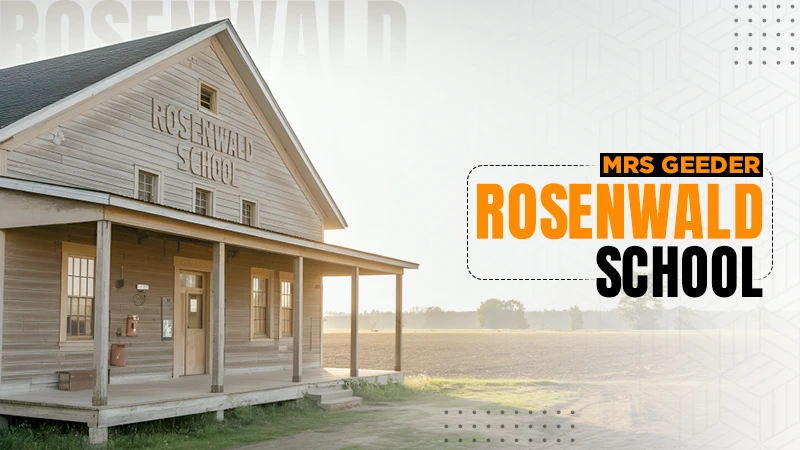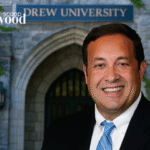The Rosenwald School project stands as one of the most significant yet often overlooked initiatives in the history of American education. Born from a partnership between Booker T. Washington and Sears, Roebuck and Company president Julius Rosenwald, this ambitious program built nearly 5,000 schools for African American children across the rural South. Among these important institutions was the Mrs. Geeder Rosenwald School in Caroline County, Virginia—a place that tells a powerful story of community, determination, and the fight for educational equity.
This article explores the history and lasting importance of the Mrs. Geeder Rosenwald School. We will look at its origins within the broader Rosenwald Fund initiative, its role in the community, and the ongoing efforts to preserve its legacy. By understanding the story of this one school, we gain a clearer picture of a pivotal chapter in African American history and its impact on generations of students.
The Rosenwald School Building Program
To appreciate the Mrs. Geeder Rosenwald School, it is essential to first understand the program that made it possible. In the early 20th century, public education for African American children in the segregated South was chronically underfunded and neglected. Schools were often dilapidated, overcrowded, and lacked basic resources like books and desks.
Booker T. Washington, the influential leader of the Tuskegee Institute, envisioned a solution. He believed that building better schools was a critical step toward racial uplift and economic independence. In 1912, he approached Julius Rosenwald with a proposal. Rosenwald, a philanthropist deeply concerned with social justice, agreed to contribute funds with a unique condition: the projects had to be a collaborative effort.
The funding model required contributions from three sources:
- The Rosenwald Fund: Provided the initial “seed money.”
- The Local Black Community: Raised funds, often through bake sales, crop sales, and donating labor and materials.
- The Local White School Board: Contributed public funds and was required to maintain the school after its construction.
This matching grant system was revolutionary. It not only built schools but also empowered African American communities, fostered a sense of ownership, and forced a degree of cooperation from local white authorities. The architectural plans, designed at Tuskegee, were also innovative, featuring large windows for natural light, proper ventilation, and dedicated spaces for industrial arts and home economics.
The Founding of the Mrs. Geeder Rosenwald School
The Mrs. Geeder Rosenwald School was established in 1928 in the community of McDuff, Caroline County, Virginia. Like other Rosenwald schools, its construction was a testament to the local community’s commitment to education. The school was built on a two-acre plot and followed the “two-teacher community school” floor plan provided by the Rosenwald Fund. This design included two classrooms separated by a movable partition, which could be opened to create a larger space for community events.
The school was named in honor of Mrs. Geeder, a respected figure in the community who played a crucial role in the fundraising and organization efforts required to build it. Naming the school after a local leader was a common practice, highlighting the deep community roots of these institutions. For the Black residents of McDuff and the surrounding areas, the school was more than just a building; it was a symbol of hope, progress, and self-determination.
Life at the Mrs. Geeder School
For over three decades, the Mrs. Geeder Rosenwald School served as the educational and social heart of the local African American community. Teachers provided instruction in core subjects like reading, writing, and arithmetic, often to students of varying ages within the same classroom. The curriculum also emphasized practical skills intended to prepare students for life in a rural, agricultural society.
But the school’s impact extended far beyond academics. It was a community center where residents gathered for meetings, church services, and social events. The building itself represented a source of immense pride. Unlike the run-down “shack schools” it replaced, the Mrs. Geeder school was a modern, well-constructed facility. The large windows flooded the rooms with light, creating a bright and welcoming learning environment that stood in stark contrast to the conditions many students had previously endured.
Graduates of the Mrs. Geeder school and other Rosenwald institutions went on to become community leaders, business owners, and advocates for civil rights. The education they received, though still limited by the constraints of segregation, provided a foundation for future success and instilled a lifelong passion for learning.
Closure and Preservation Efforts
The era of Rosenwald schools came to an end with the desegregation of public schools following the landmark Brown v. Board of Education Supreme Court decision in 1954. As African American students began attending previously all-white schools, the Mrs. Geeder Rosenwald School, like many others, was closed in the late 1950s or early 1960s.
After its closure, the building fell into disrepair. For decades, it stood vacant, a silent reminder of a bygone era. Unfortunately, this was the fate of many Rosenwald schools, with thousands being demolished or left to decay.
In recent years, however, there has been a growing movement to preserve these historic structures. Recognizing their architectural and historical significance, organizations like the National Trust for Historic Preservation have worked to save the remaining Rosenwald schools. In 2011, the Virginia Department of Historic Resources officially recognized the Mrs. Geeder Rosenwald School by adding it to the Virginia Landmarks Register and the National Register of Historic Places. This designation has been a critical step in the effort to restore the building and repurpose it as a community resource and museum.
The Legacy of Mrs. Geeder Rosenwald School
The story of the Mrs. Geeder Rosenwald School is a powerful example of how a community can come together to overcome adversity. It highlights the profound value placed on education by African Americans during the Jim Crow era and the innovative partnership that helped turn their aspirations into reality.
Preserving this school is not just about saving an old building; it is about honoring the legacy of the students, teachers, and community members who built and sustained it. It serves as a physical monument to the struggle for educational equality and the enduring power of community action. As we continue to work toward a more just and equitable society, the lessons from the Mrs. Geeder Rosenwald School remain as relevant as ever.






